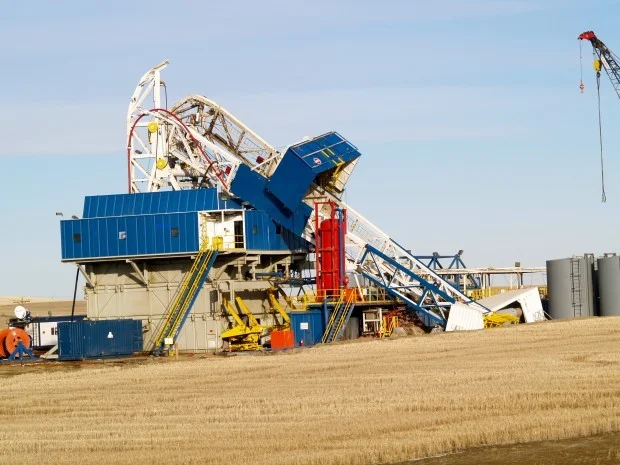Clarification of Depth Rating of the Schramm TX130
By Colin Rice · Colin Rice Exploration and Training (Pty) Ltd. · www.colinrice.co.za
This article aims to clarify some of the calculations that were published in our articles on the pullback capacity of top drive drill rigs and clear up any misunderstanding, particularly around the Schramm TX 130 drill rig.
This is a clarification article which forms part of our Technical Series on Drill Rig Capacity. Click here for an outline of the entire Drill Rig Capacity Series.
Earlier this year we published a series of articles on the pullback capacity of hydraulic longstroke and top drive drill rigs. In the article on top drive drill rigs we included pictures of a Schramm TX 130 drill rig and we used that drill rig to illustrate how the manufacturers pullback specification and the “legal” pullback capacity can be different. Subsequent to the publication of the article, Schramm have pointed out an inaccuracy in our article and so we would like to clarify the calculations that we did and clear up any misunderstanding.
In the earlier article, we stated that the 38mm pullback ropes used on the drill had a Mean Breaking Load of 84 MT and so, using the legislated factor of safety of 6 in South Africa, this gives the drill a “legal” pullback capacity of 28MT (84 divided by 6 = 14, there are two ropes so pullback = 28MT).
The Mean Breaking Load that we used was based on test certificates supplied by the contractor. We assumed that the ropes were OEM supplied but they were not - they were a substitute sourced from another supplier!
Schramm have subsequently pointed out that when the TX 130 drill leaves the factory, it is fitted with pullback ropes with a Mean Breaking Load of 129 MT – Schramm use a ultra-high strength swaged rope.
The “legal” pullback capability id therefore substantially greater than was indicated in our article. In South Africa, the legal pullback capacity of the drill would be 43 MT ( 129 divided by 6 = 21,5MT, there are two ropes so pullback = 43MT).
Now, out of this several very important points arise:
1. The pullback capacities calculated in the articles were based on current South African legislation which requires that we apply a factor of safety of 6 to steel wire ropes. In other countries, different factors of safety are applied and, in some countries the law is silent on the issue – manufacturers and contractors make up their own!
The safe working load of any given steel wire rope therefore depends upon the factor of safety that is applied – what is legal in one country may not be legal in another.
In the case of the TX130, even with the OEM supplied pullback ropes, the “legal” pullback capacity of the drill, in South Africa, is still less than the specified pullback capacity.
We are not suggesting that there is anything wrong with the drill or with any of the other drills that we used to illustrate the point that we were trying to make. All are fantastically well engineered and proven drill rigs, however, because mining and exploration companies, and contractors, must operate within the law, we strongly recommend that a simple pullback calculation is done before the project starts to ensure that the drills comply with legal requirements.
At shallow depths, when tripping loads are within the “legal” depth capacity of the drill, this is not an issue but when loads reach legal capacity then the mining company and the contractor are exposed should something go wrong. The mining company and contractor need to know when this point is reached. If you understand your risks you can manage them - if you don’t understand your risks, you will be in trouble!
2. Notwithstanding all of the engineering and design that goes into manufacturing a drill rig, once the drill leaves the factory, the manufacturer loses control over maintenance of the drill and the contractor determines what spare parts are used. If the contractor believes that the OEM supplied part is too costly then he will source a less costly substitute - the substitute may not however have the same specifications as the original and this can compromise the safety and performance of the drill. This was very clearly highlighted in our example.
Contractors frequently modify drills and so mining and exploration companies need to be extremely careful when evaluating drill rigs and ancillary equipment for their projects.
3. It is essential that even if only OEM supplied parts are used on drills, regular and proper inspection of critical lifting equipment and lifting tackle is done on a daily basis and that appropriate discard standards are applied.
We would like to thank Schramm for bringing this to our attention, we believe that it has very clearly highlighted a very important issue that we missed in the original articles.





This article aims to clarify some of the calculations that were published in our articles on the pullback capacity of top drive drill rigs and clear up any misunderstanding, particularly around the Schramm TX 130 drill rig.